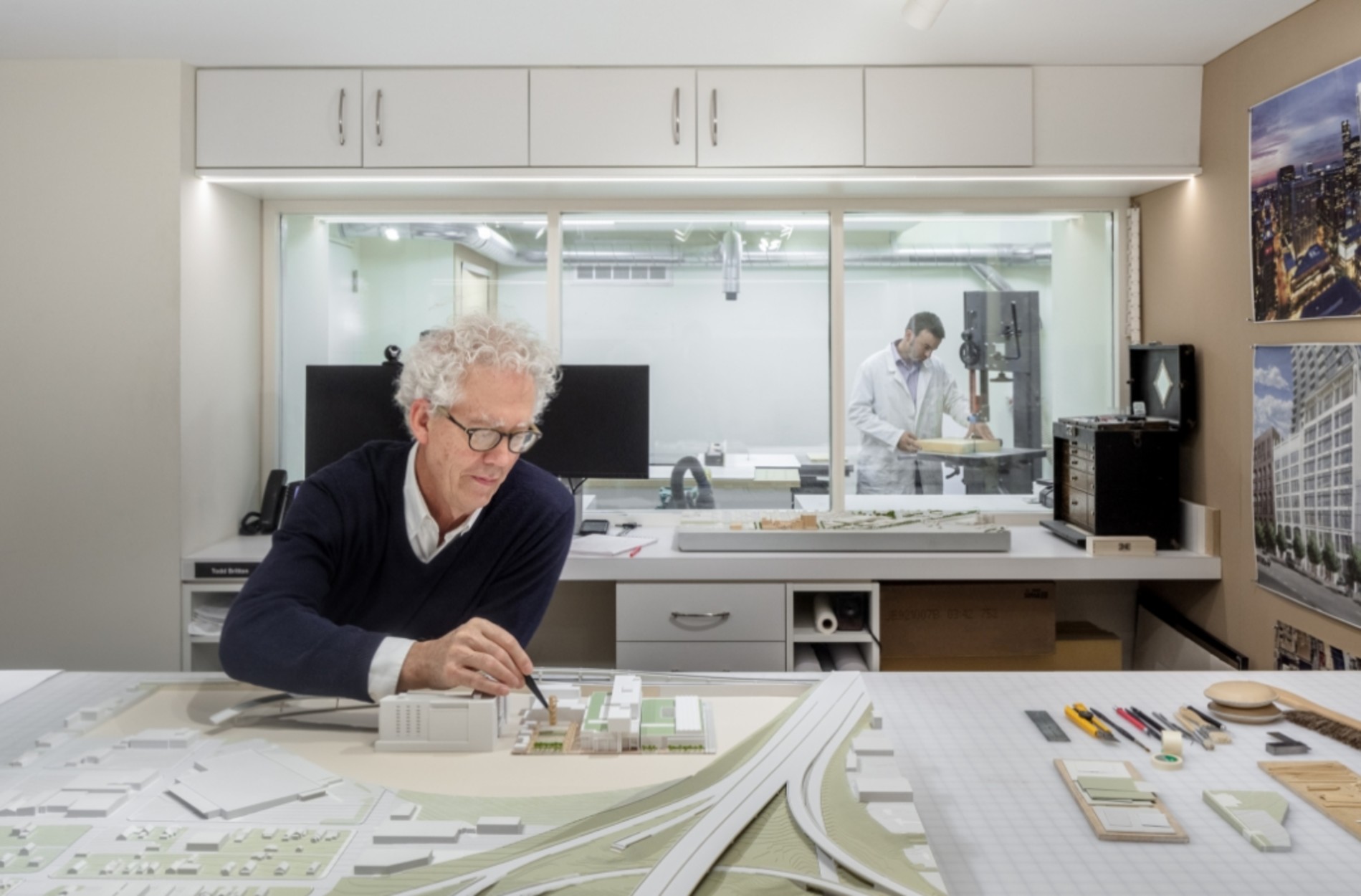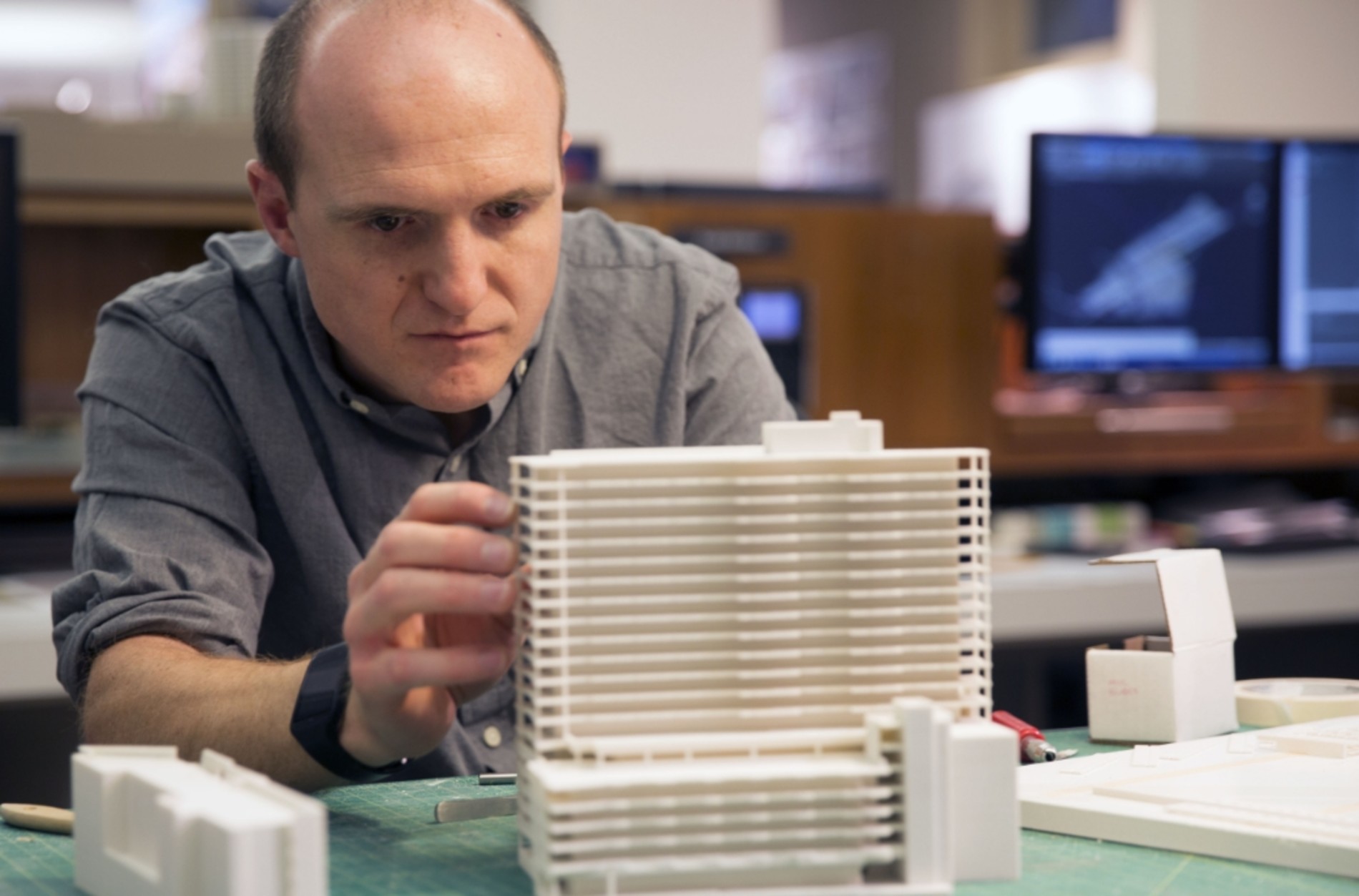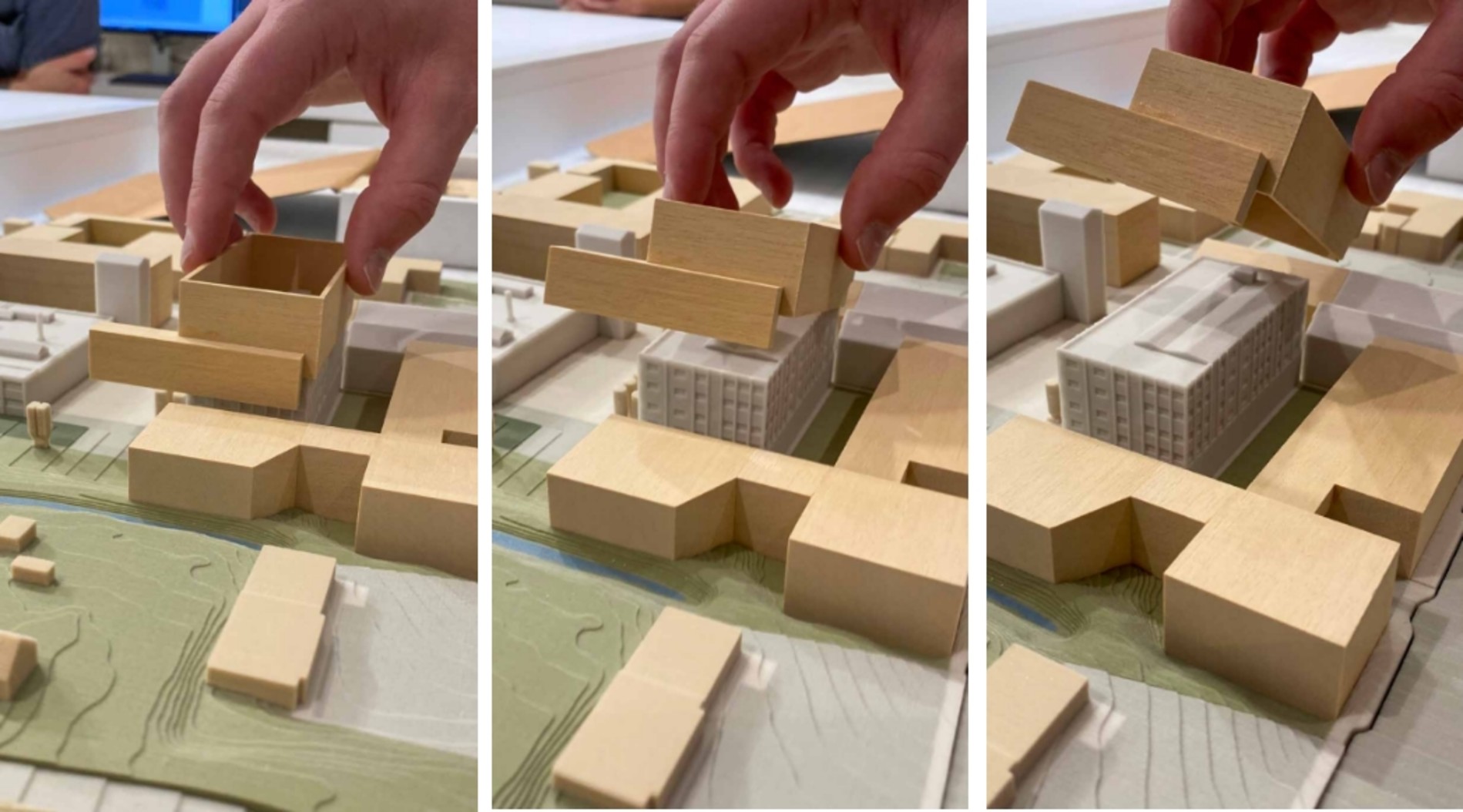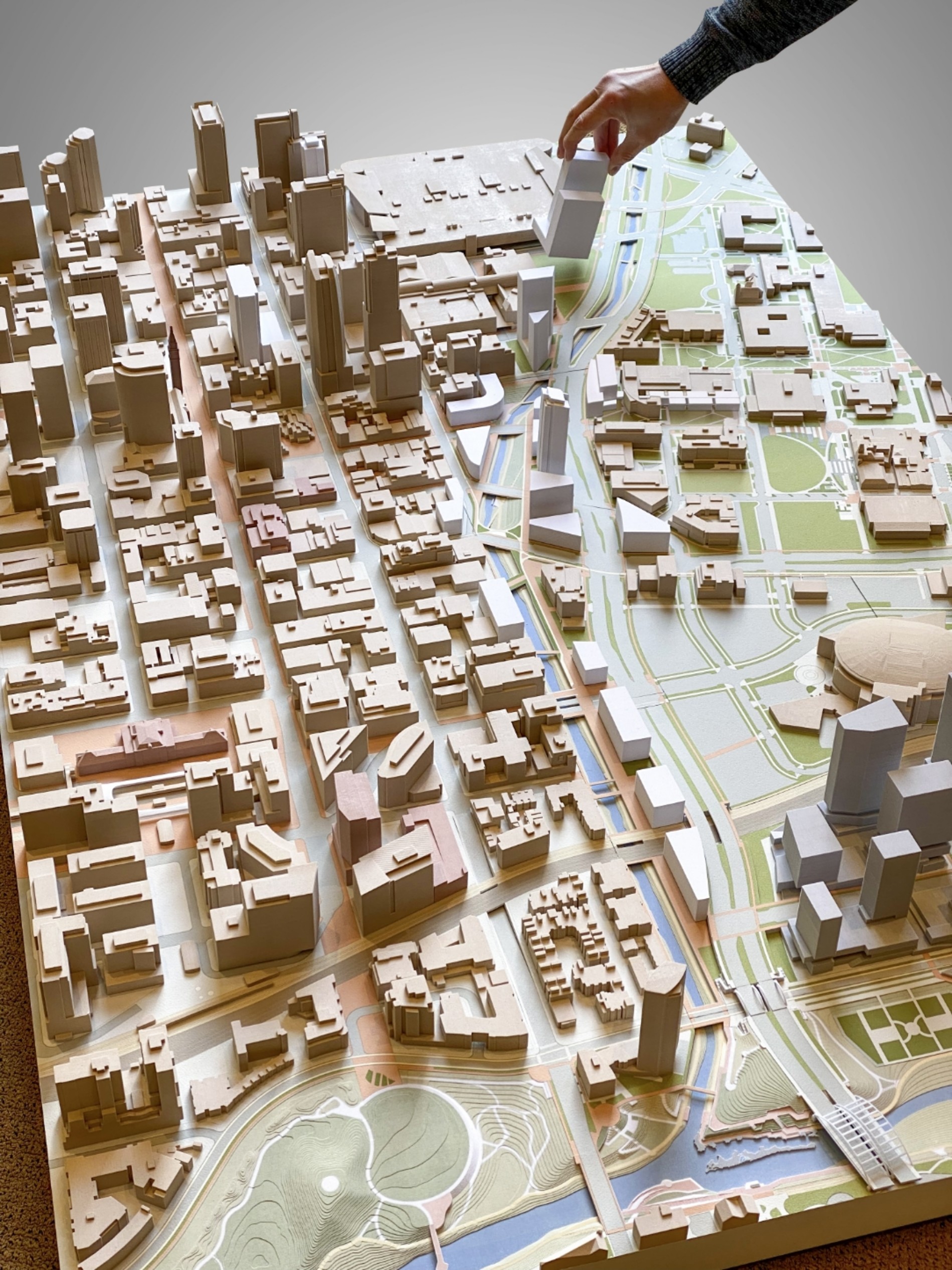For more than thirty years, model-making has been integral to Tryba Architects’ process and approach. Visitors to our offices’ galleries, which showcase three decades of Tryba architectural models, often remark on how the models inspire them. Professional quality architectural models provide dimensional expressions of concepts and ideas, helping inspire understanding and build consensus.

Since ancient times, models have been used to reveal a building’s features and form. Over the centuries, models evolved to become highly intricate objects of beauty, inviting a level of immersion beyond that which is possible with two-dimensional drawings or renderings. Models assist the human eye in comprehending ‘the big picture’ by placing detailed information within a single, comprehensible scene that provides a more thorough understanding of a building’s relationship to its surroundings. Models also give designers an efficient platform for imagining and experimenting with new ideas as they evolve over time.
Tryba’s model studio is currently led by Todd Britton and Ben Engle Folchert, two exceptionally talented model builders who have synthesized a common language for the firm’s physical models, combining traditional methods with cutting-edge technology. Each with a background at large international firms, Todd and Ben joined Tryba Architects in 2015 when founder David Tryba, FAIA—himself a former model maker—began envisioning a shift toward the use of technologies such as laser cutting and 3D printing.
As the nephew of a professional model-maker, Todd grew up around architectural models. After attending the University of Colorado’s business school, he worked in merchandising before returning to his uncle’s model business on a full-time basis. Todd was recruited to establish the captive model shop for Fentress Architects, which he led for 30 years.

Taking a different path, Ben discovered model-making in the architecture program at Iowa State University, where he came to realize that he preferred three-dimensional form over drawing. After working for Perkins & Will in Vancouver, Ben and a colleague formed their own company, Scale Art, furthering the relationships established with the Vancouver architecture community. After recovering from illness, he joined 3DS Custom Fabrication creating custom signage, exhibits and installations before making the move to Tryba.

The studio’s models fall into three main categories. Concept design models are produced at the earliest stages of design and typically lack details; their purpose is to illustrate basic form and shape. Featuring greater levels of detail, working design models assist architects and their clients to more fully plan out a project and can be changed and updated throughout the process. Finally, archival or presentation models are created to commemorate a project in its final form.

Due to the increased use of digital design information and fabrication methods, models frequently start with the creation of a complete 3D-CAD prototype which accurately depicts the final model assembly. Specialized files are exported to the firm’s in-house 3D printer which ‘grows’ buildings or components in white or full-color using gypsum powder. ‘Hybrid’ models are created by adding hand-crafted materials including wood, cardstock, and paint. Laser-cut plastic is used to represent glazing. Site information is often shown using color plots on watercolor paper or full-color 3D-printing. When the need arises, the model studio uses outside vendors for specialized processes including CNC (computer-numeric controlled) milling of topographic model bases, metal etching, and stereolithography—processes that result in highly detailed and durable model components.

To provide continuity with the firm’s signature style, Tryba’s 3D-printed models are designed to seamlessly coexist with the firm’s earlier models, which were handcrafted from wood or cardstock. Purposefully monochromatic to emphasize form and texture without the distractions of changeable elements like color, the majority of the studio’s models are finished in a palette of warm, earthy tones. A range of vibrant greens bring emphasis to the natural landscape features, terraces, gardens and courtyards.
Models serve many purposes beyond project design. They are important visioning, marketing and fundraising tools, providing a physical replica that can significantly help engage a broad audience and convene wider conversations. Many of Tryba’s models are used for master planning and urban design, featuring large context layouts and massing. Todd and Ben have created, or are in the process of creating, detailed models of downtown Denver, downtown Fort Worth, the Fitzsimons Innovation Campus and Fox Park, among others. These models feature infrastructure, landscaping and other site elements in addition to buildings. Like a puzzle, the pieces can be switched out to show alternative options for site development, helping designers and our clients in visualizing a site or a skyline.

While many architecture firms have dispensed with model-making—either for budgetary reasons or to rely solely on digital representations—Tryba continues to see tremendous value in crafting detailed, high-quality models of designs at every scale, from small-scale urban planning models to large-scale façade maquettes and detail studies. Nearly every project in the firm’s portfolio has been planned and conceptualized with the aid of scale models. As design technology has evolved, so has the model process, yet this critical planning tool remains something more—an expression of design philosophy, transformative ideas, and genuine artistry.
